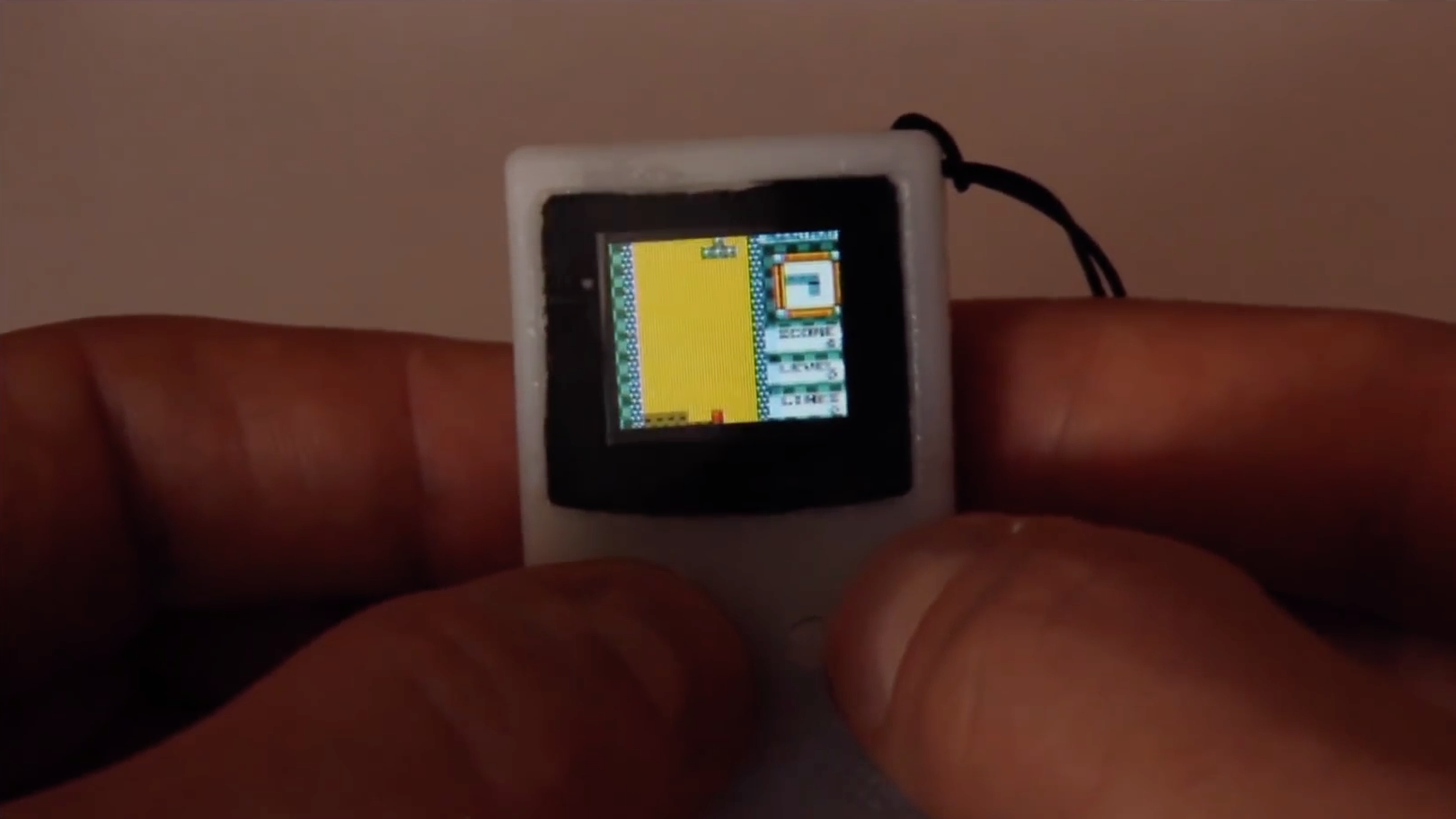This mini 3D-printed Game Boy mod is almost too small
Hack it smaller

If there’s one thing you can rely on technology to do, it’s to get smaller and smaller until the point at which you’re almost certain it can’t go any further, and then it shrinks just a little more for good measure.
Nintendo itself has played its part with devices like the Game Boy Micro in the past, but now an intrepid modder has taken the whole miniturisation thing to an extreme with a Game Boy that’s so small it’ll happily fit on a keychain.
The modder, who goes by the name ‘Sprite_TM’, built the diminutive device for Hackaday’s 2016 SuperConference, and it’s perfectly capable of playing full on Game Boy games.
Small but mighty
Hardware wise the core of the device is a ESP32 chip, which is equipped with Wi-Fi to allow for ROM transfers to the console.
It’s got a small speaker built in to its custom-built 3D-printed case, and its screen is a 96 x 64 pixel OLED display (slightly lower resolution than the original’s 160 x 144 display).
Oh and it’ll also run Doom, so you can add it to the ever-expanding list of things that can run the seminal first-person shooter.
It’s been a good year for mini Nintendo consoles. Back in September a modder made a working SNES out of a Raspberry Pi, and put it all in a hand-painted case made out of clay.
Get daily insight, inspiration and deals in your inbox
Sign up for breaking news, reviews, opinion, top tech deals, and more.
More recently of course we’ve seen Nintendo itself release the NES Mini, which has delighted us all with its authentic NES controllers, even if they were attached to horrifically short controller leads.
For the full story of the mini Game Boy you can check out Sprite_TM’s talk at Hackaday below.
- Check out our NES Mini review for more micro retro gaming action.
Jon Porter is the ex-Home Technology Writer for TechRadar. He has also previously written for Practical Photoshop, Trusted Reviews, Inside Higher Ed, Al Bawaba, Gizmodo UK, Genetic Literacy Project, Via Satellite, Real Homes and Plant Services Magazine, and you can now find him writing for The Verge.
